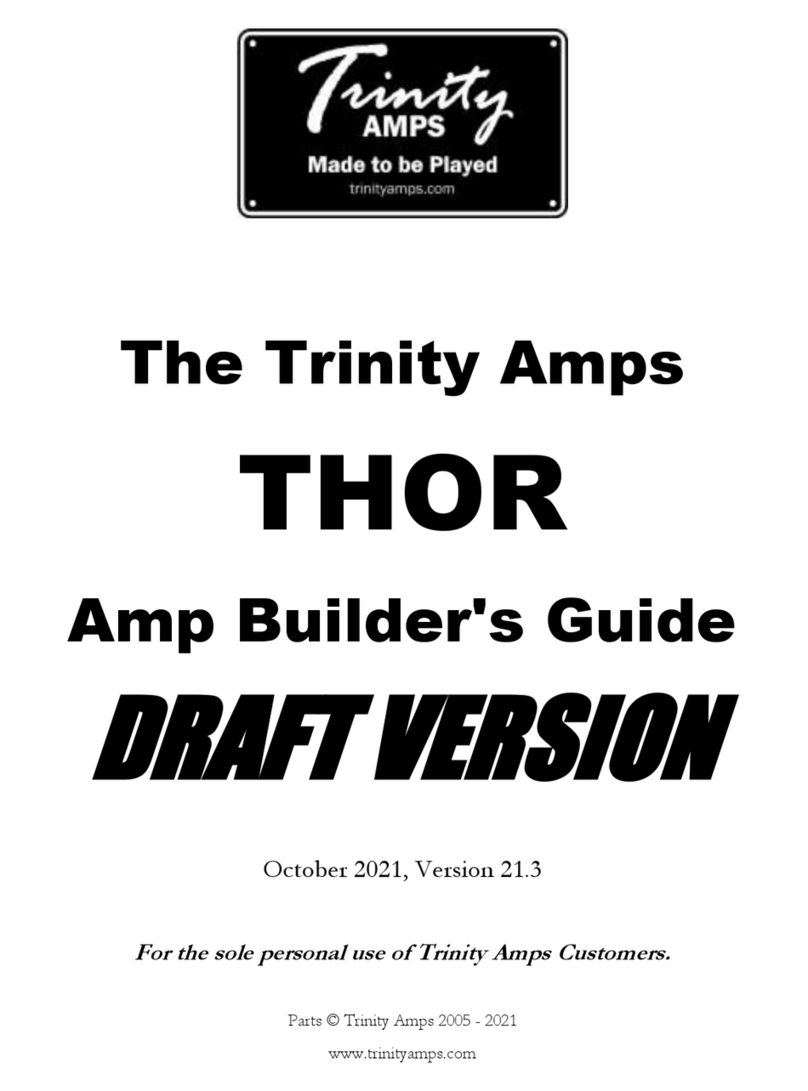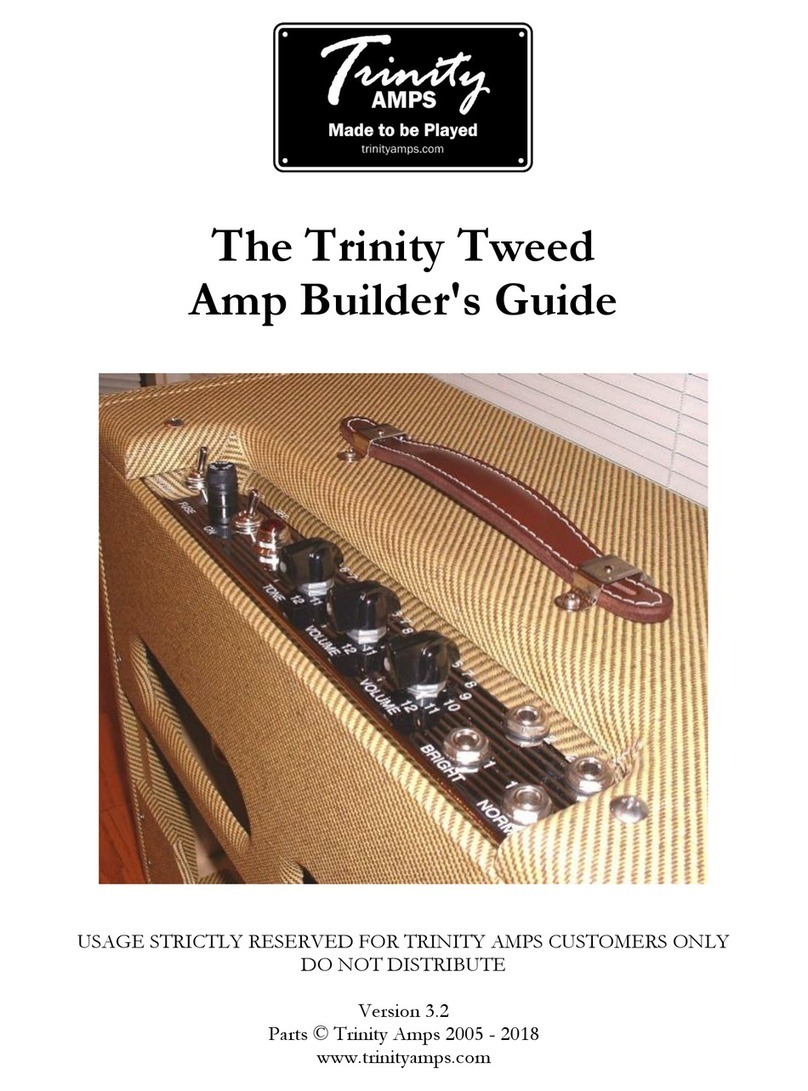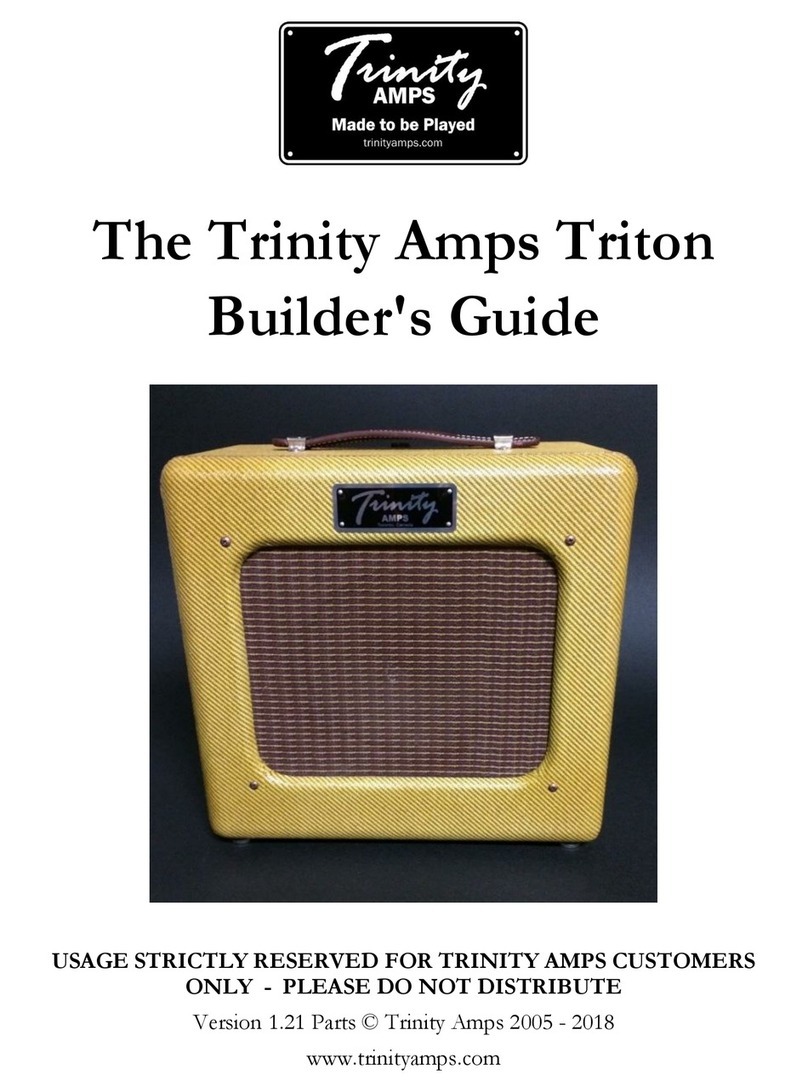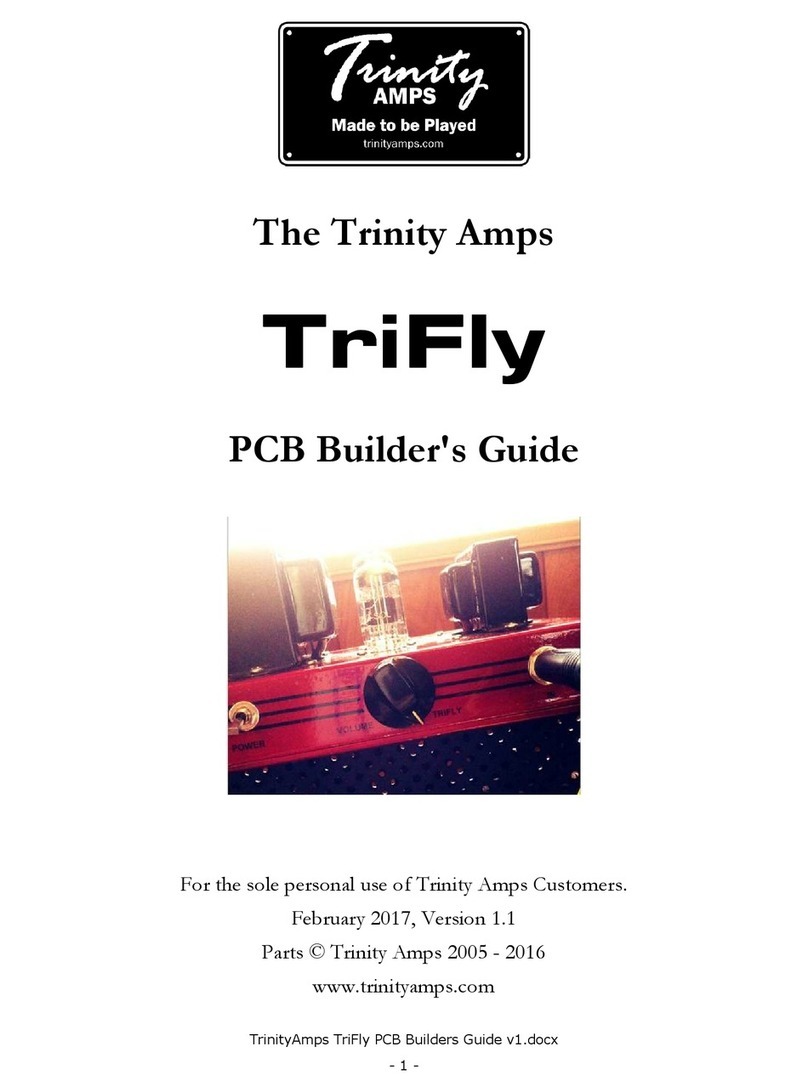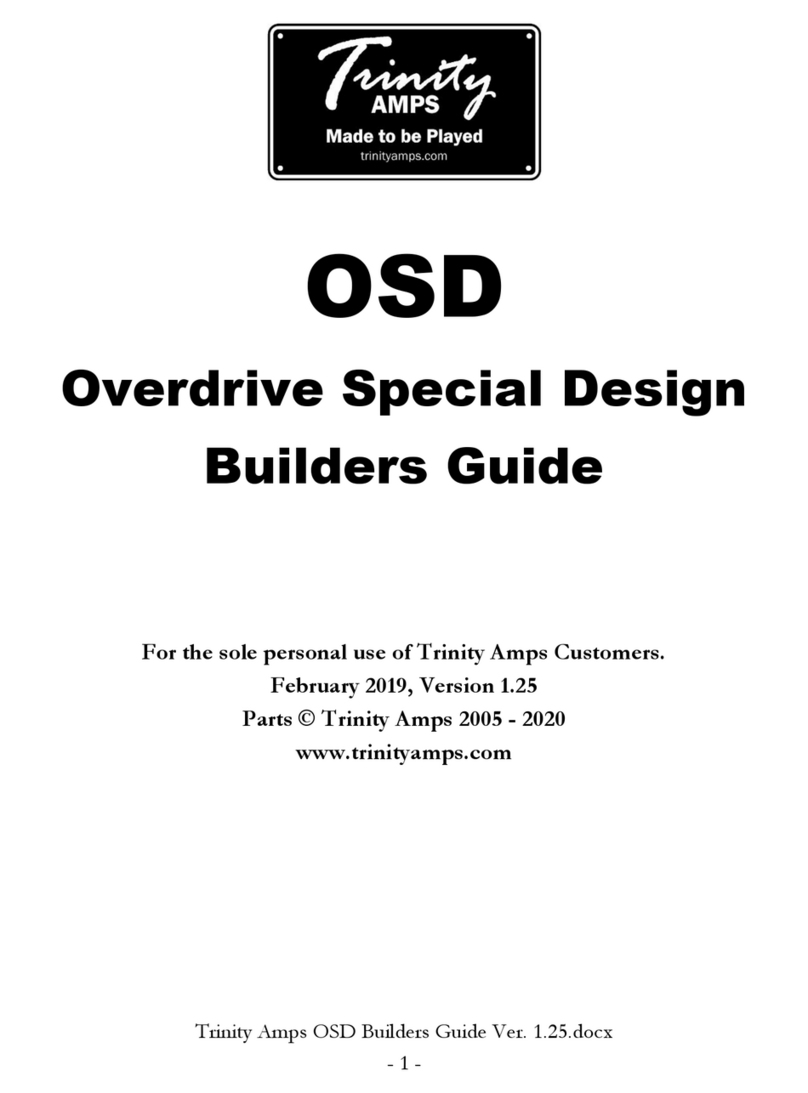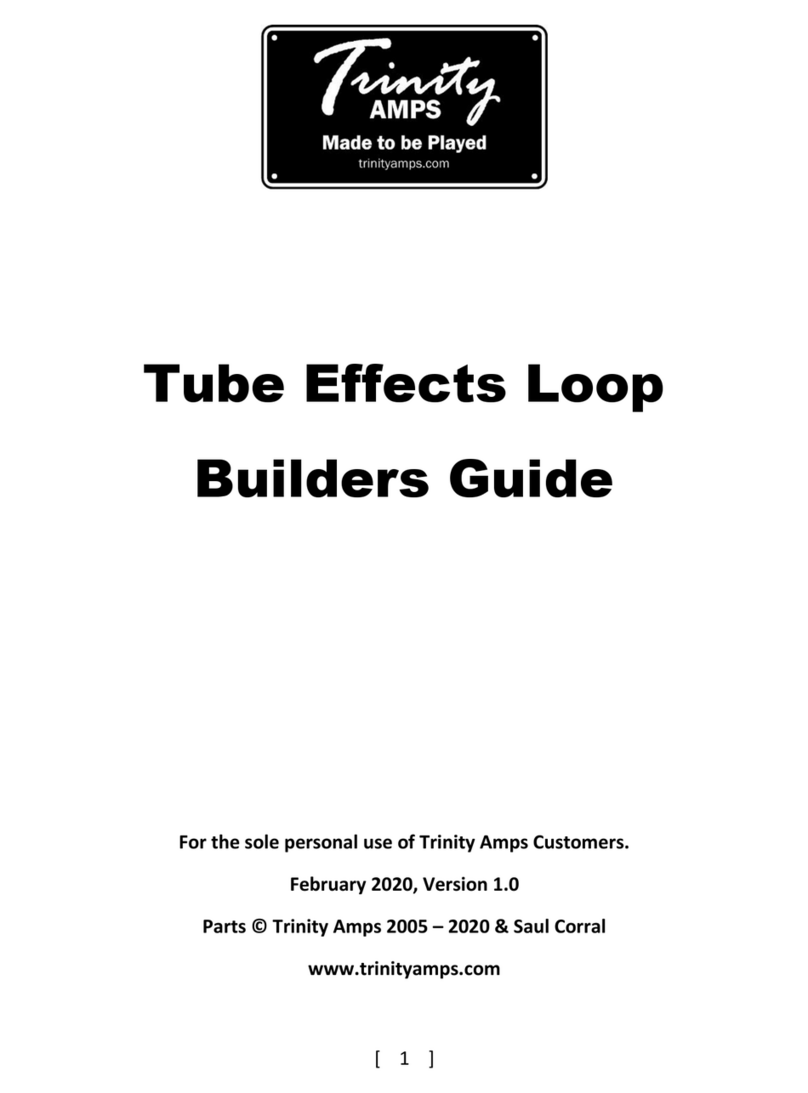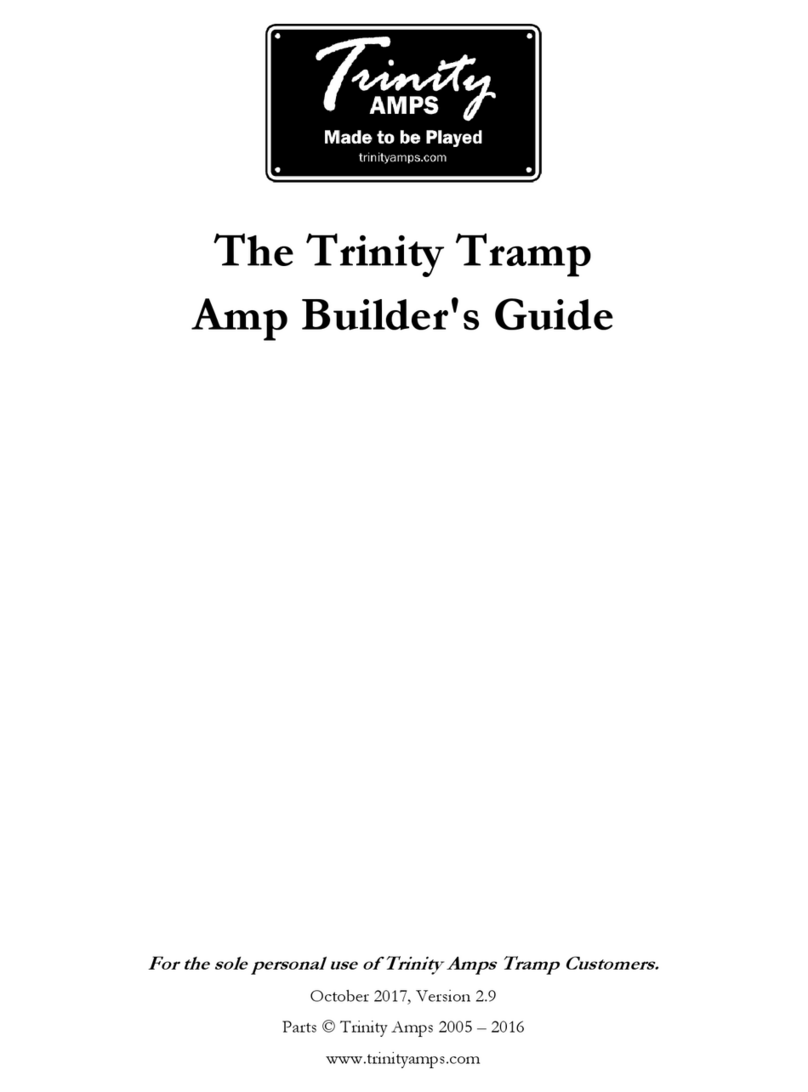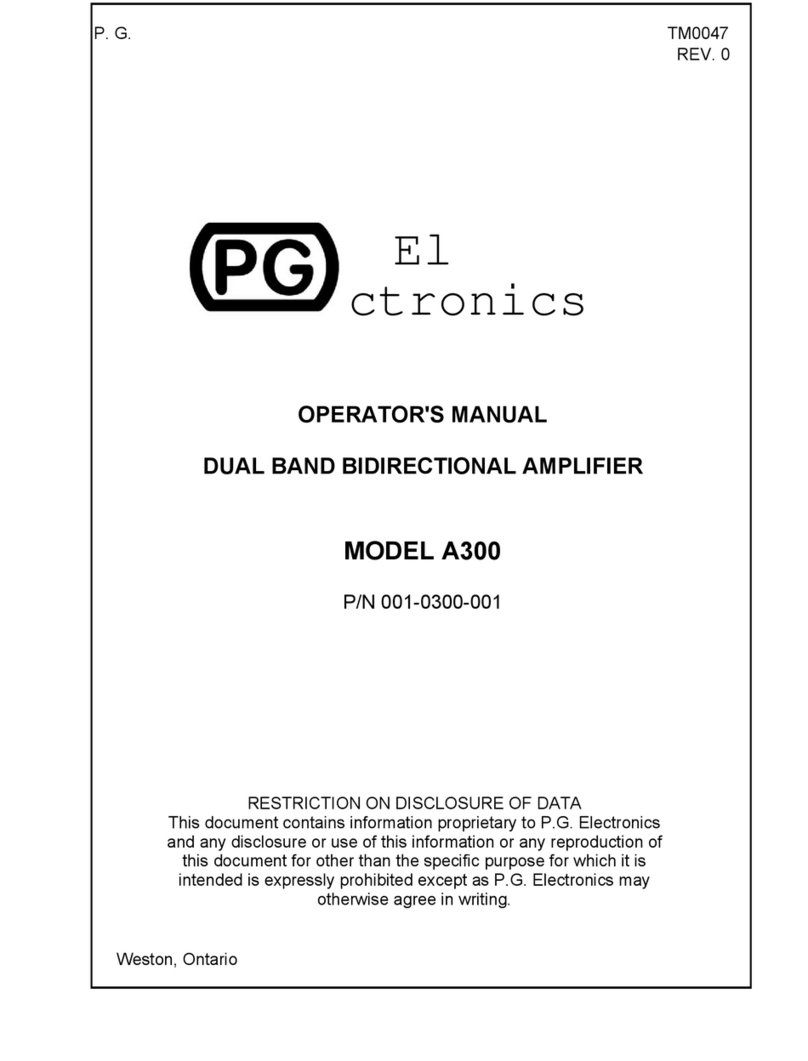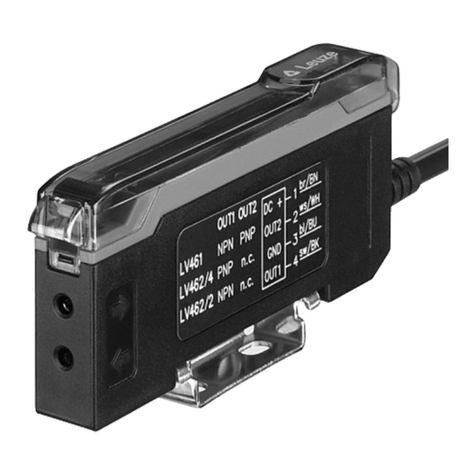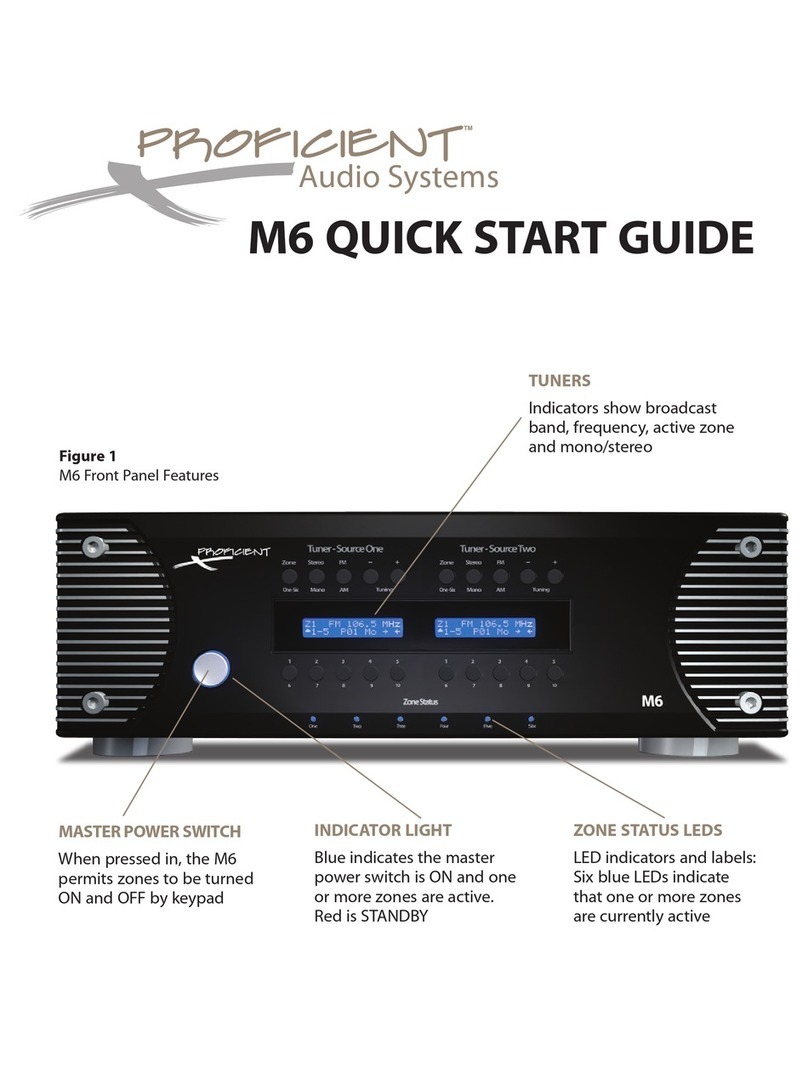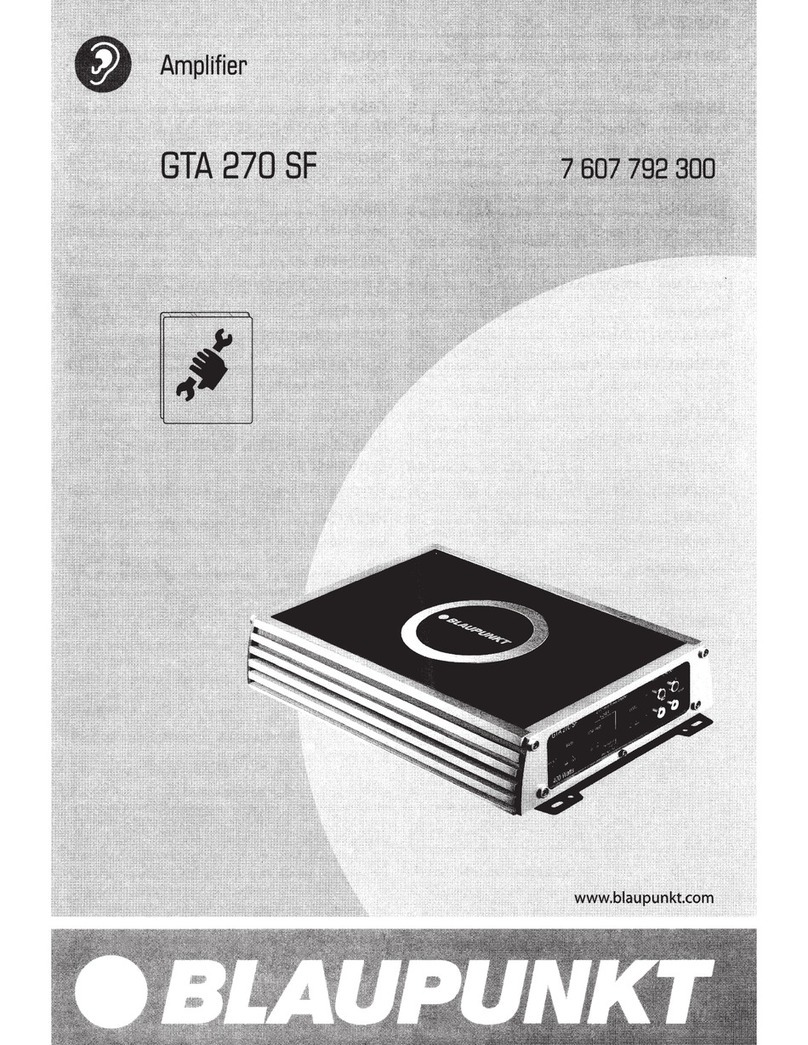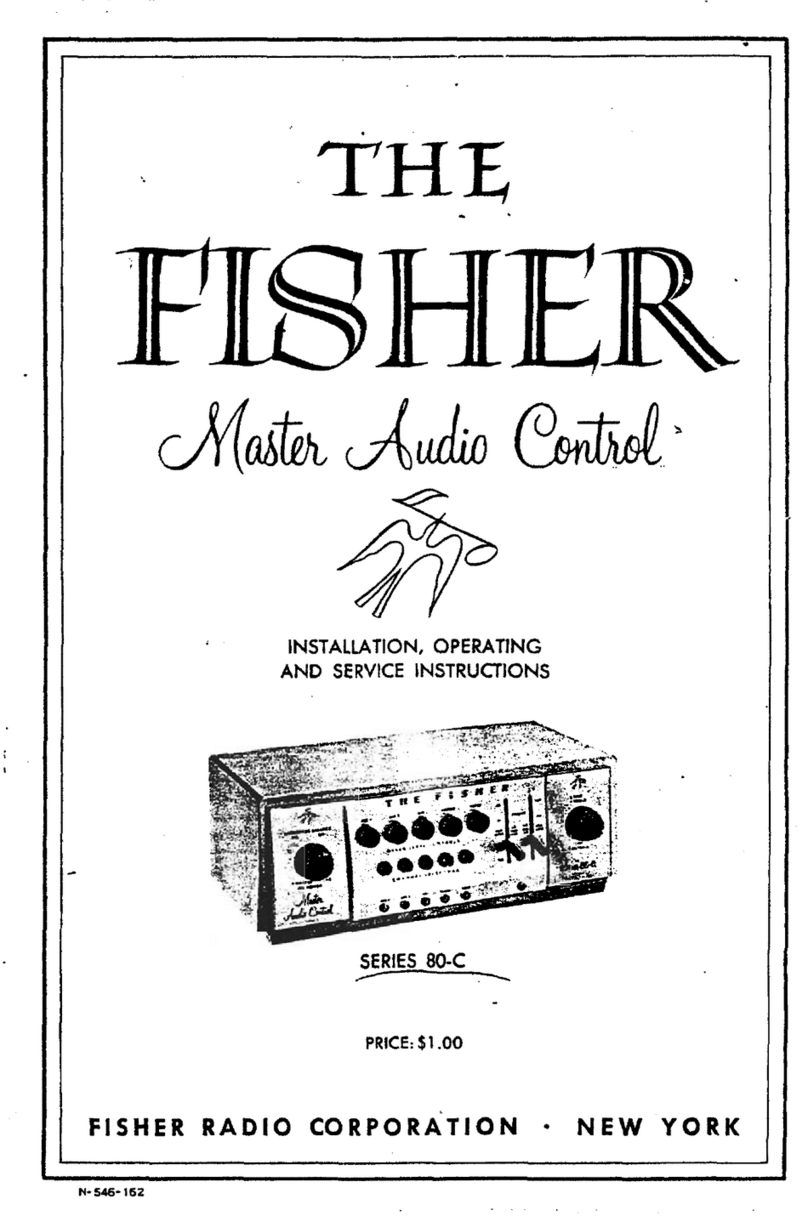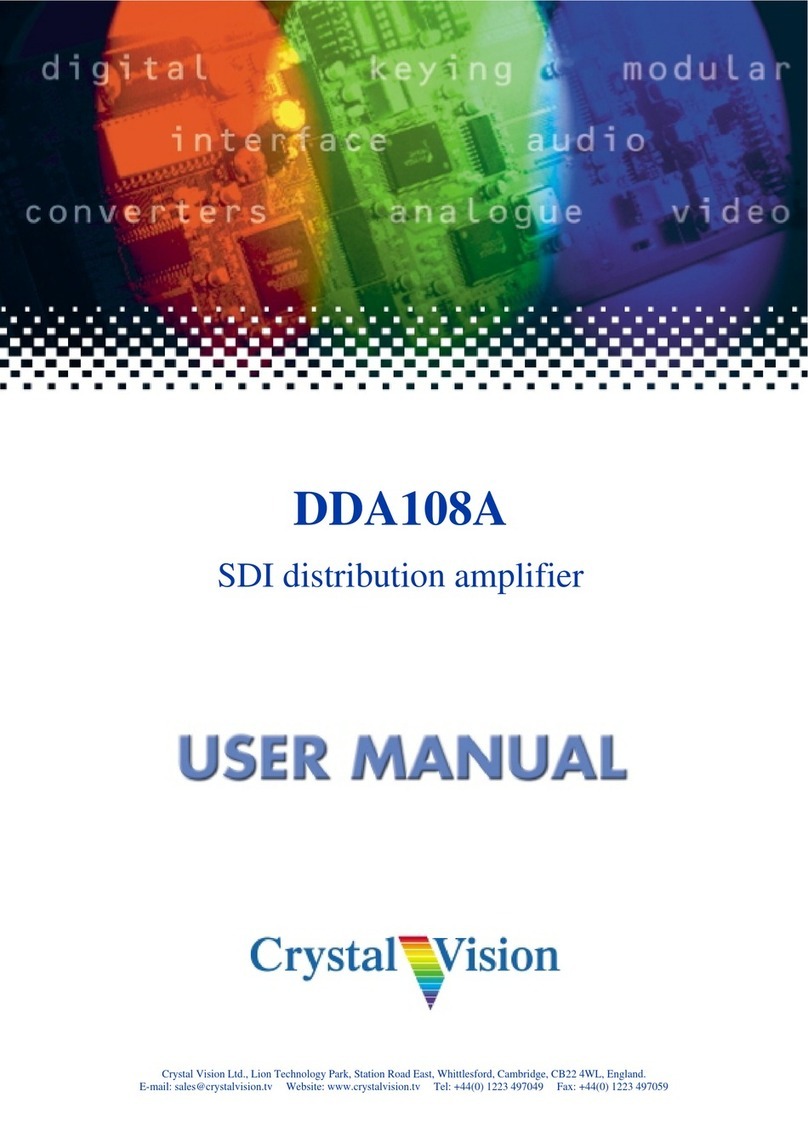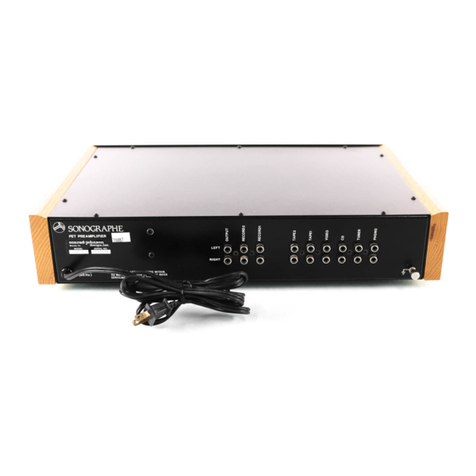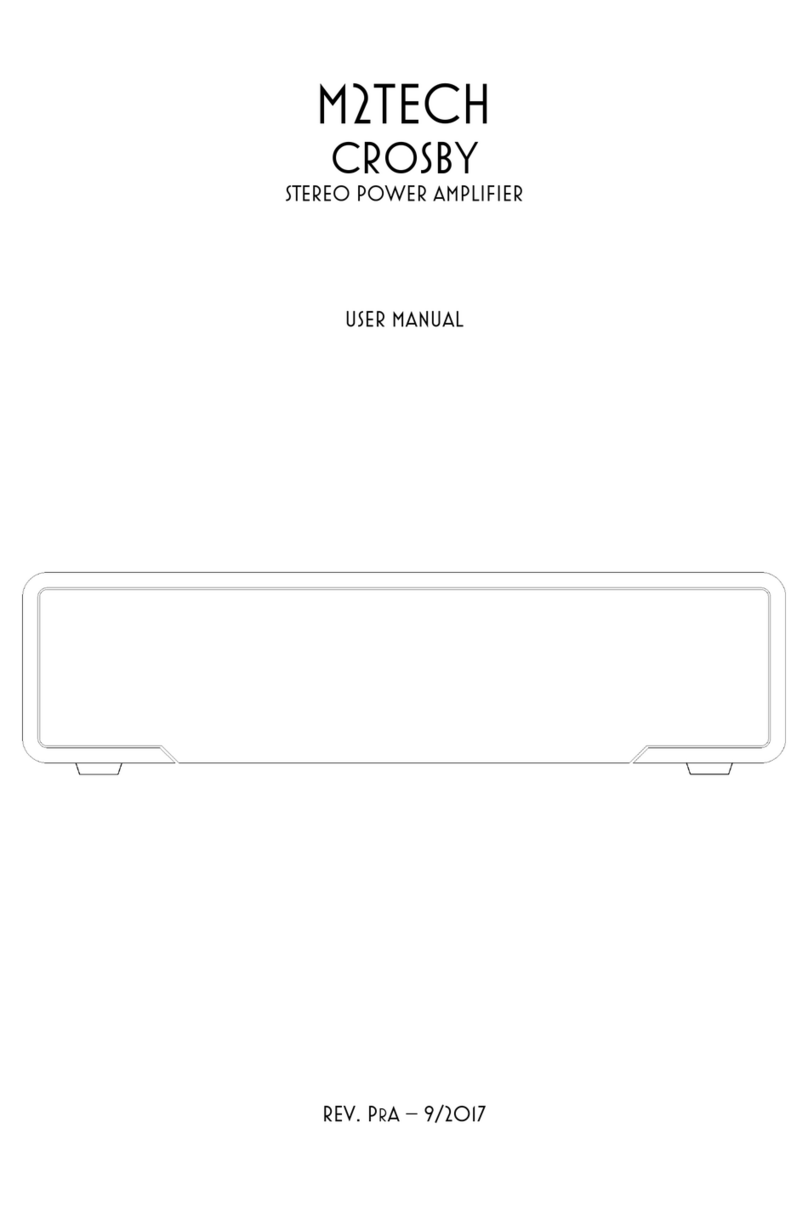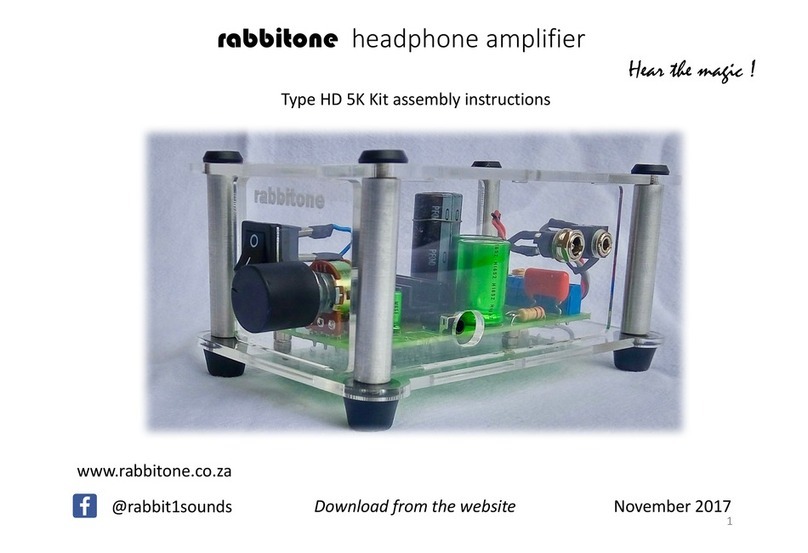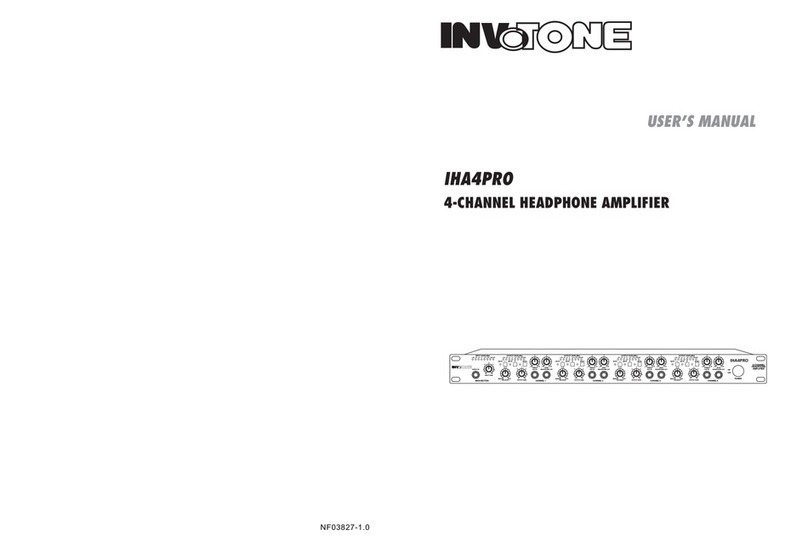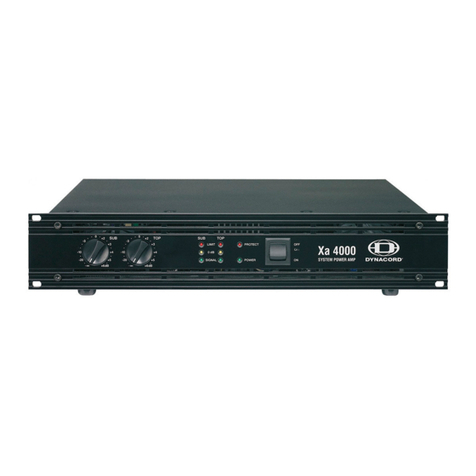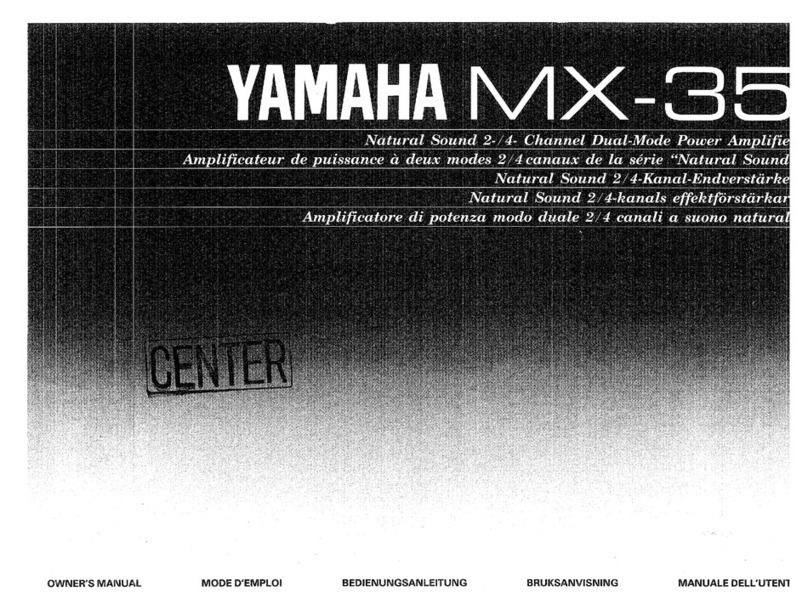
TRIWATT Builders Guide Ver. 0.94.doc
- 8 -
Custom TRIWATT Lead Description
The TRIWATT was designed by Trini y Amps o cap ure he classic HIWATT sound wi hou he
usual classic ear-bleeding volume levels. I is closely based on an early '70s s yle Hiwa DR, bu
u ilising ei her 6V6 or KT66 power ubes for more usable power ou pu . Fur hermore, i has he 3-
inpu configura ion used by David Gilmour of Pink Floyd, plus an Overdrive s age, as found in
early '80's “Biacrown era” Hiwa Lead amps.
Bright channel - perfec righ ou of he ga e. The en ire ravel of gain knob yields usable ones.
Brigh is AMAZING from zero o dimed, wi h lo s of sub le colours in be ween. This channel really
cu s hrough he mix.
Normal channel - has usable gain from he bo om all he way o he op, and lo s of sub le
shades of clean and semi-clean from around 10 o'clock o 3 o'clock. This channel is impor an
because i 's where mos people will probably spend mos of heir ime. The one, is big and more
de ailed.
Link - is like jumping he wo channels on a 4-holer. There are infini e shades of one possible by
blending he wo channels' volume con rols. The ac ual "sound" of he link inpu s is sub ly more
scooped-mid and sparkly, giving one se of knob se ings wo sligh ly differen ones.
Tone Controls - Treble, Middle, Bass, Presence - hese are less like "boos /cu " knobs and more
like “real” one con rols. They do a lo o he one in a very sub le way. Wi h Fenders/Marshalls
ex reme se ings can ge painful. TRIWATT never ge s painful. Presence in par icular is very
au hen ic - ra her han boos ing a high reble, i opens up or ex ends he op end of he one o
add “air” o he sound. TRIWATT EQ knobs are in very similar places when compared o original
Hiwa amps, dialed in o similar ones.
Master Volume - urning he mas er down isn' a one killer like in some amps. The one is no
compromised when he mas er is under around 11 o'clock. IF you se he OD up appropria ely
(see below), even wi h he MV way down - 7 or 8 o' clock, i s ill sounds huge. This con rol sounds
big, quie , and i i sounds big loud!
Overdrive - This con rol may be he reason someone who owns arguably a Hyligh -era Hiwa 4-
holer, would wan he TRIWATT. This is where he TRIWATT "ar " lives – a . Pull ou he
Overdrive con rol and you ge he ex ra gain s age of a Biacrown era Hiwa Lead amp (push he
knob in and i 's ou of he circui ). This gain s age na urally gives you more gain and more
dis or ion, as well as more compression. So, for rhy hms as well as leads, i 's incredible! The way
i works, is ha when he Overdrive s age is engaged by pulling he Overdrive knob, he s age's
drive/gain level is se by he Normal and Brigh volume con rols, and he s age's ou ou level is
se by means of he Overdrive knob. So i 's possible o se he s age o provide a lo of ex ra gain
bu a he same volume level as when i s no engaged. Bu here are more possibili ies. If you
have o play lead, bring up he brigh /normal gain s age and s arve he overdrive gain and he
one comes forward is more dynamic and bigger. Turning up he Overdrive, wi h an LP and
humbuckers reveals big me al ones, ye rolling back he gui ar volume and playing more gen ly
yields delica e, ransparen , sparkling cleans wi h he Overdrive s ill on. And you can imagine all
he shades in be ween!!!
Guitars - The TRIWATT can handle many gui ars wi h aplomb. Tele, S ra , Danos, Ric, Les Paul
wi h P90's for he single coils, and Les Paul, SG, Seymour Duncan ho -rodded Fender Cyclone for
'buckers, PRS Mira in bo h 'bucker and single mode - have all been es ed wi h his amp, and
every gui ar sounds GREAT. Also, Hiwa s are known for aking a lo of pedals really well. The
TRIWATT does no disappoin in his area ei her.




















